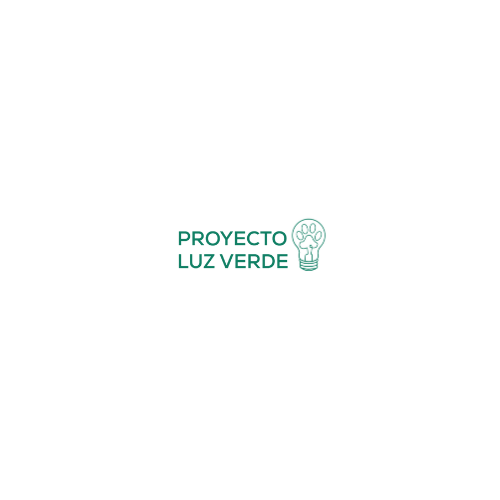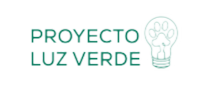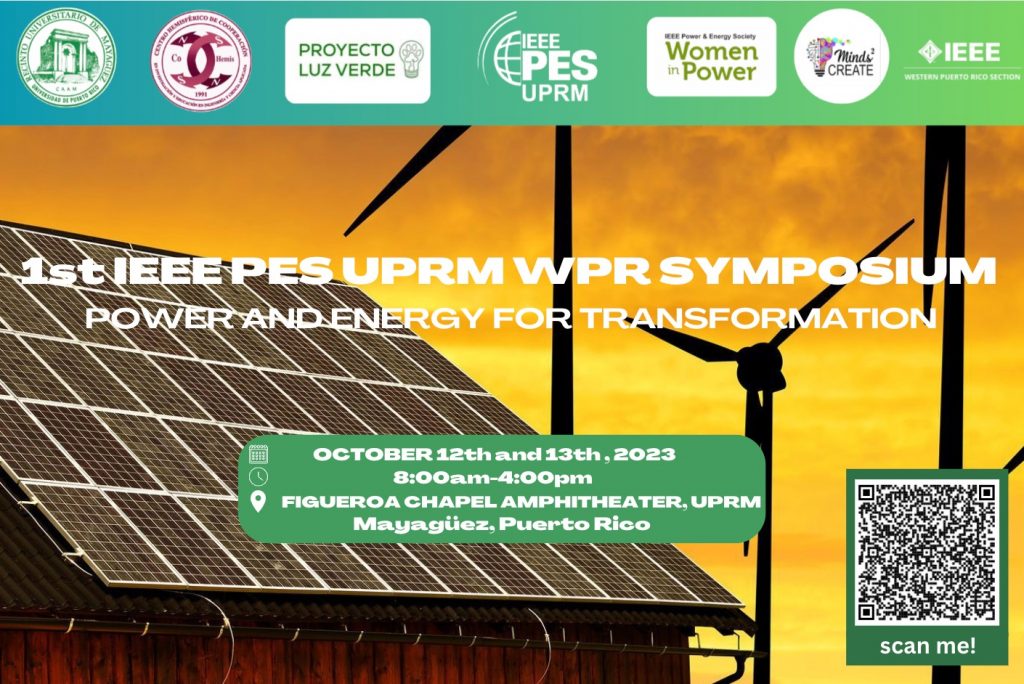On October 12–13, 2023, the UPR Mayagüez community and partners from government, industry, and nonprofit organizations gathered to speak clearly about Puerto Rico’s energy present and future. This summary brings together the most important points from both days, with links to the full videos, key takeaways, and practical resources for students, instructors, and communities.
Dates & Location: October 12–13, 2023 · 8:00 a.m. – 4:00 p.m. · Figueroa Chapel Amphitheater, UPR Mayagüez
Official links:
- Event site (CoHemis): https://www.uprm.edu/cohemis/ieee-pes/
- Day 1 video: https://www.youtube.com/live/KtDuVseMJWI
- Day 2 video: https://www.youtube.com/live/zvMtW2sY74s
What was it about?
The symposium offered a comprehensive view of Puerto Rico’s energy transition. Speakers discussed PR100 (a U.S. DOE study with scenarios to modernize the grid), resilience for communities and critical facilities, energy justice to ensure benefits reach everyone, and the technical steps to safely integrate renewables. The program also covered cybersecurity for energy systems and the challenges and opportunities of electric mobility.
Key Topics
- PR100: data-driven pathways to increase renewables with reliability and reasonable costs.
- Community Resilience: microgrids, critical loads (clinics, water, shelters), maintenance, and logistics.
- Energy Justice: equitable access to reliable, affordable power; clear and inclusive communication.
- T&D Modernization and Grid-Forming Inverters: stability with high solar penetration and safe operation.
- Cybersecurity (OT/ICS): asset inventory, network segmentation, secure access, incident response.
- Electric Mobility: planning charging stations, reliability, safety, and user experience.
Most Important Points for students
- Understanding why and how grid planning happens (PR100) helps connect classroom theory with real decisions.
- Resilience is not only technology—organization, communication, and community education matter.
- Energy justice guides policies and projects so no one is left behind.
- In operations, details matter: interconnection, protection settings, testing, and maintenance.
- Clear career paths exist: power systems, power electronics, OT cybersecurity, and EV infrastructure.
Expected Impact & Outcomes
- Stronger collaboration among university, government, industry, and communities on concrete projects.
- Better use of scenarios and prioritization criteria (reliability, resilience, equity).
- Higher demand for student internships and projects in modeling, outreach, and pilot evaluations.
- Clearer educational resources for communities (guides, checklists, bilingual materials).
Practical Recommendations
- Students: build a short portfolio (simple models, lab notes, posters or technical briefs).
- Instructors: use the videos in class with mini-assessments (glossary, 150–200-word reflections).
- Communities: prepare lists of critical loads, verify local shelters and their power plans, and request clear information when reviewing solar + storage proposals.
Frequently Asked Questions (FAQ)
- What is PR100? A U.S. Department of Energy study that proposes realistic scenarios to transform Puerto Rico’s electric system, considering resources, costs, and reliability.
- What does community resilience mean? The ability to maintain essential services (health, water, communications) during and after emergencies.
- How is solar integrated into the grid? Through interconnection processes that include studies, proper protection settings, and testing; grid-forming inverters support stability.
- Why does cybersecurity matter? OT systems control real equipment; protecting access and logging events prevents interruptions and damage.
- Where can I find the agenda or materials? On the event page at CoHemis.


